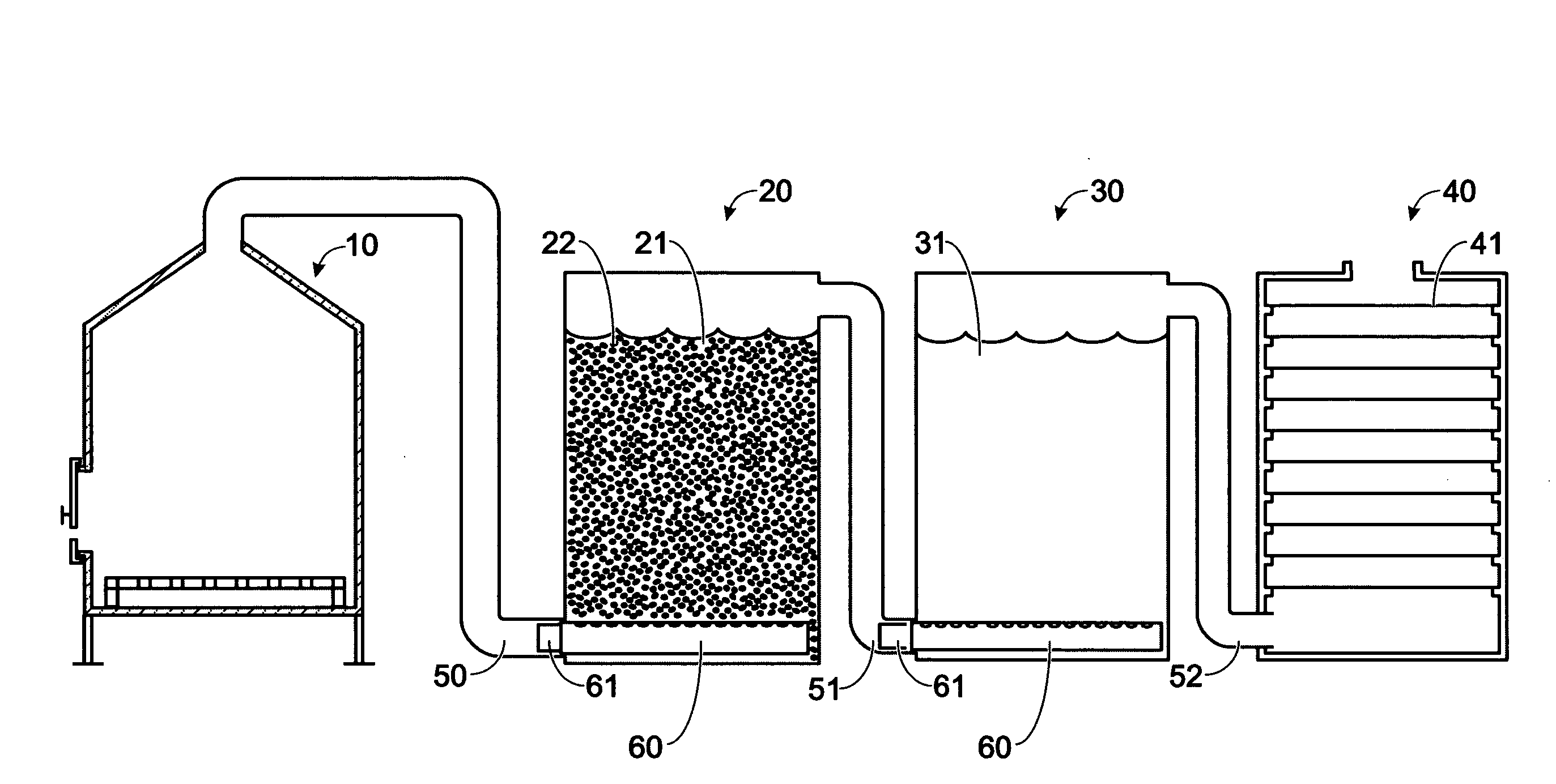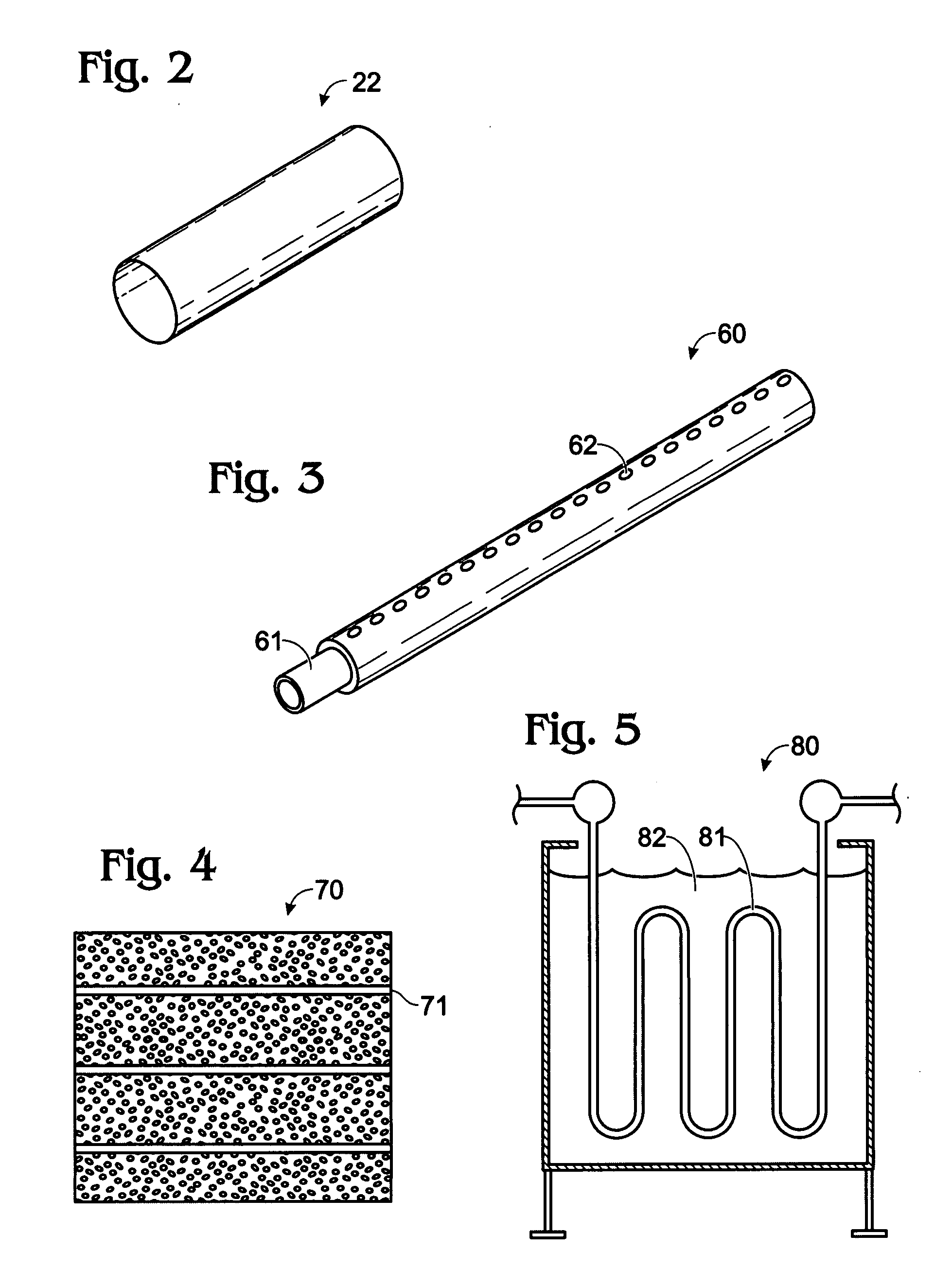Method for manufacturing tasteless and clean smoke for seafood preservation
- Summary
- Abstract
- Description
- Claims
- Application Information
AI Technical Summary
Benefits of technology
Problems solved by technology
Method used
Image
Examples
Embodiment Construction
[0036]In the preferred embodiment, the filtration and recovery subsystem consist of a filter tank 20 and a recovery tank 30. The filter tank 20 is filled with water 21 and individual filter elements 22. The filter elements 22 may be of any number of shapes and sizes, though in the preferred embodiment, due to economy and effectiveness, small sections of plastic type straws of approximately 1 cm in length are used, having a large amount of surface area and relative low cost. Near the bottom of the filter tank 20 is a bubbler 60. The bubbler 60 is a hollow cylindrical device with a series of holes 62 arranged along the bubbler's 60 length. One end of the bubbler 60 is capped while the other end has an inlet 61 to allow gas into the bubbler 60.
[0037]A filter inlet pipe 50 leads into the filter tank 20. Smoke is sent into the filter tank 20 through the filter inlet pipe 50. The bubbler's 60 inlet 61 is connected to the filter inlet pipe 50. Once in the filter tank 20, smoke is bubbled t...
PUM
 Login to view more
Login to view more Abstract
Description
Claims
Application Information
 Login to view more
Login to view more - R&D Engineer
- R&D Manager
- IP Professional
- Industry Leading Data Capabilities
- Powerful AI technology
- Patent DNA Extraction
Browse by: Latest US Patents, China's latest patents, Technical Efficacy Thesaurus, Application Domain, Technology Topic.
© 2024 PatSnap. All rights reserved.Legal|Privacy policy|Modern Slavery Act Transparency Statement|Sitemap



